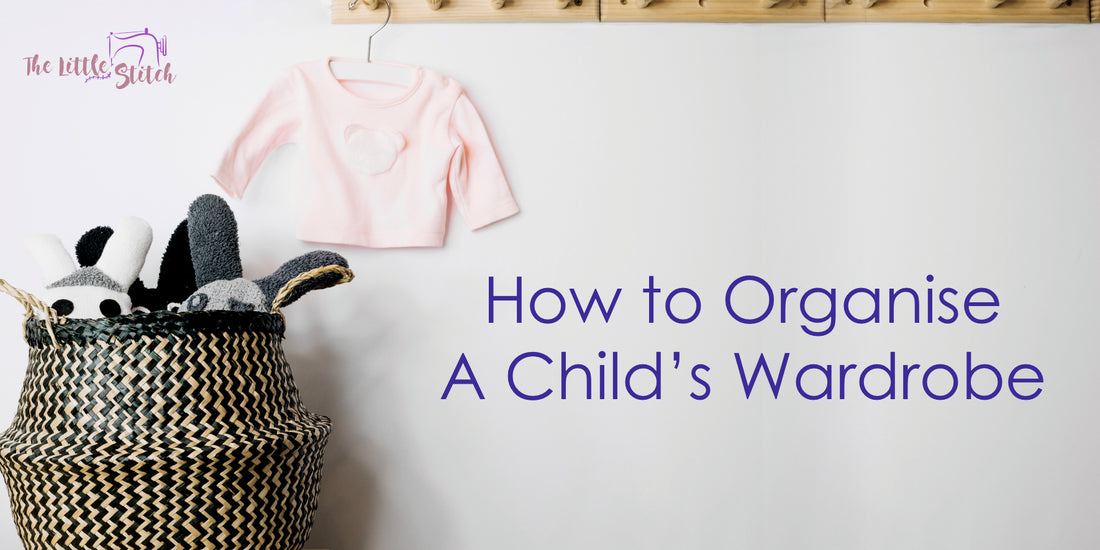
How to Organise A Child’s Wardrobe
Share
Your child’s clothes are truly cherished and emotional possessions. As every piece has a lot of thought behind it and holds precious memories, it naturally becomes close to a parent’s heart. But, there is also a side to clothing that demands extra attention and at times becomes a tedious task to handle: the wardrobe. As innumerable little, cute pieces keep piling up in your child’s wardrobe, you’ll realise some don’t fit anymore, some might have lost the sheen, some are never used, and some are never found at the right time. Hence, to keep you away from this chaotic mess, we’ve brought this guide on how to organise your child’s wardrobe.
Start with Decluttering
As you decide to organise your child’s wardrobe, start with a clean slate. So, just empty the entire cupboard for once. Then pick and assess each cloth and divide them into three segments: keep, discard, and donate. While we understand that you might be emotionally attached to your child’s clothing, unless you plan to upcycle them, you must get rid of anything that no longer serves you or your child.
Start Categorising and Organising by Use
Now, once all the clothes you no longer need are out of the way, we will tackle the ‘keep’ pile. Again, categorise the clothes by various uses: party wear, school uniform, casual wear, nightwear, seasonal wear, etc., it’s up to you to decide how you want to do so. This organisation will help you easily reach out for a piece of clothing when needed. It simplifies the everyday process of dressing up your child.
Organise by Additional Parameters
If you have space, demarcations, and energy. You can go a step further by organising as per various parameters that fit your lifestyle. For example: T-shirts can be sleeveless and full sleeves. Dresses can be cotton and synthetic, coords can be with shorts and pants. As this is meant to help make your outfit planning easier and clothes more accessible, it’s up to you to decide what will make your life easier.
Make Space For Tiny Pieces
A lot of kid’s clothes are super tiny, are in a huge number, and can easily get lost. These include bibs, socks, underwear, accessories etc. You can dedicate drawers to these items. And, if you don’t have enough drawers, bring in bins that can fit in your cupboard and hold the items. Once this organisation is in place, you won't have to look for a little thing everywhere, as it’ll be easily accessible. Our secret tip is that if you tend to forget what’s where, label your drawers and bins!
Also, with such an organisation in place, you can teach your kids to always put back things in their proper place.
Use Items That Optimise space and storage
You can use accessories to help you stay organised and make the best of the space in your child’s wardrobe. Some ways to do so are:
- You can install shelves at different heights to make space for various clothing types and accessories.
- You can add hanger rods to hang delicate items like occasional wear or regular items that need to be crips, like uniforms.
- You can add over-the-door accessories for items like bags, belts, and hats.
- You can make maximum use of vertical space by installing multi-tiered racks. These can store shoes, folded clothing, or anything that suits you well.
Rotate Seasonal Items
Don’t store all clothes from various seasons in the cupboard, in the open. The clothes from the past seasons should be packed in vacuum bags and tucked away. You can store them on the top-most shelf, in your store or in the bed box. This will keep the cupboard spacious and neat at all times.
Keep the Wardrobe Fresh
After all the organisation is done, take a few steps to ensure the wardrobe remains fresh and free of humidity. You can add child-safe closet fresheners, camphor, or odour-absorbing charcoal to keep the wardrobe smelling fresh. And, if you live in humid areas, you can add a bulb inside your closet or keep absorbia to prevent fungus and mould in the clothes.
Involve Your Child
Make sure to involve your child in the process and take their input and ask for their help. This will make the child feel engaged and valued and will also teach them organisational skills. Most importantly, it will encourage them to take responsibility for their space.
Regular Maintenance
Set aside time for regular maintenance to keep the wardrobe in top shape. Periodically review the organisation system, remove outgrown or unused items, and continue to organise a child’s wardrobe at regular intervals.
